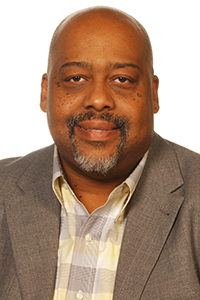Are evangelical clergy outliers on science?
(RNS)—For years, studies have suggested many white evangelical Christians reject the scientific consensus that human actions are driving climate change. A just-published study of clergy in America confirms it.
The National Survey of Religious Leaders reveals 78 percent of white evangelical clergy reject the assertion human actions are the cause of climate change. By contrast, only 27 percent of Black Protestant clergy and 21 percent of liberal or mainline Protestant clergy reject it.
The study of 1,600 U.S. congregational leaders across the religious spectrum was conducted in 2019 and 2020, and some findings have been released over the years, but the entire report was just published.
While white evangelical clergy reject the idea humans are responsible for climate change, they are not always anti-science, the study reveals.
“I think there’s very little reason to think anything’s changed much in the last five years,” said Mark Chaves, the study’s principal investigator and a professor of sociology at Duke University.
Most clergy, including white evangelicals, endorsed a medical approach to treating depression in addition to a spiritual approach. The study found 87 percent of evangelical clergy said they would encourage their congregants to seek help from a mental health professional when suffering from depression. The study showed 85 percent of Black Protestants, 97 percent of mainline Protestants and 99 percent of Catholics agreed.
“Clergy overwhelmingly adopt either a wholly medical or a combined medical and religious view of depression,” the study concluded.
Likewise, 69 percent of all clergy, and 64 percent of white evangelicals in particular, endorse palliative care at the end of life, agreeing in some circumstances, patients should be allowed to die by withholding possible treatments, suggesting an underlying support for a medical science approach.
The contrast between the two views of science—the rejection of climate science but the acceptance of medical science—is striking, and researchers suggest one motivating factor: politics.
“Differences among clergy about the more recent issue of climate change suggest a connection to partisan politics more than to theology,” Chaves said.
White evangelicals overwhelmingly vote Republican—Donald Trump won the support of about 80 percent of white evangelical Christian voters in 2016, 2020 and 2024, according to AP VoteCast. And the Republican Party has become opposed to any policy reforms on climate change in recent decades. 
When it comes to climate change, white evangelicals may be driven by their politics more than their religion. Republicans, at least prior to the pandemic when the study was fielded, have not been steadfastly opposed to medicine—which may be one reason evangelicals are more likely to accept it.
“It used to be the thinking that religion always came first and people’s religious commitments drove their politics,” Chaves said. “There’s been more recognition lately of how it goes in the opposite direction, and this is kind of a version of that too.”
Robert P. Jones, the president of Public Religion Research Institute, agreed.
“Climate change has been politicized in a way that mental health has not,” Jones said.
“So, it’s not that (evangelicals) don’t believe in climate science and they do believe in the science behind medications and psychological counseling. It’s that rejecting climate change has been established as a necessary tribal partisan belief in a way that rejecting mental health treatment has not.”
The National Survey of Religious Leaders, though fielded before the coronavirus pandemic, offers a detailed picture of the country’s clergy with demographic data on clergy age, sex, congregation size, compensation, health and well-being. It is considered the largest, most nationally representative survey on clergy available.
Additional findings from the survey include:
- In 2019-20, the median primary congregational leader was 59 years old, seven years older than the median clergy age of 52 in a similar 2001 survey. Most U.S. clergy of all faiths (66 percent) found their calling as a second career.
- Women accounted for only 17 percent of congregations’ primary leaders, though up from 11 percent in 2001 when a similar study of clergy was published. Most of those women clergy leaders were concentrated in liberal mainline traditions; 32 percent of those churches are led by women.’
- Among the clergy leading congregations (890 of the 1,600 surveyed), 66 percent were white, 26 percent Black, 5 percent Hispanic and 3 percent Asian. Catholic priests were the most diverse racially, with 21 percent who were Hispanic.
- The median primary clergy leader was paid $52,000 for working full time. The study showed 7 percent of full-time primary clergy earned $100,000 or more, while 20 percent earned less than $35,000 a year.
- Most congregations no longer provide their leader with housing. Only 21 percent reported that they lived in a manse, parsonage or rectory, a drop from 39 percent in 2001.
- U.S. clergy are pretty happy and physically healthy. Only 5 percent of clergy said their health was poor or fair, compared with 12 percent in the general population, according to a Centers for Disease Control study. Mainline clergy were somewhat less happy and satisfied in comparison with other religious traditions.
- The vast majority of clergy—97 percent—were very or moderately satisfied with their work, and 85 percent felt satisfied with their life almost every day. The survey was conducted before the coronavirus pandemic, and some studies post-pandemic have shown an increase in clergy burnout and stress.
The survey, funded by a grant from the John Templeton Foundation, had a margin of error of 3.5 percentage points.








